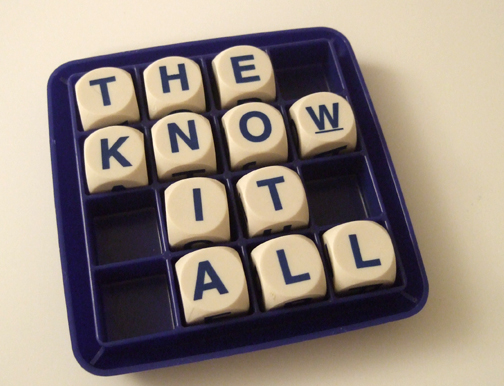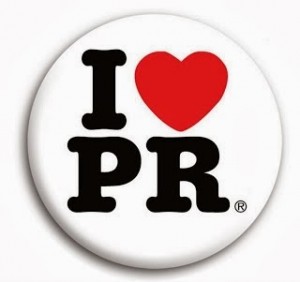
The know-it-all: you know that person. It seems everyone has one or two in their life. The not-so-humble person who elicits an eye roll every time he/she begins to speak. The person who pontificates on everything, and the minute you bring up something new, they claim to have known about it yesterday. They’re annoying, right?
But in the field of communication, we have a responsibility to be know-it-alls in the least obnoxious way. What do I mean?
Chance Shay and I went to a presentation on influencer marketing where Mark Fidelman quoted Google’s Eric Schmidt, saying that every two days we create as much information as we did from the beginning of time up to 2003. Every day it seems that there is more and more information to be consumed, and it’s tougher and tougher to cut through the noise. That presents a challenge for marketers because it makes it more difficult to reach customers in a meaningful way. But it’s also a challenge because technology is forcing us to do more than ever before. We have to be the experts. We have to filter through the junk for our clients so they don’t have to. We have to be ahead of trends so we can present the best possible ideas for our clients. Phew!
It’s a tall order, but that’s why I make it a personal mission to be a know-it-all. And in the best way possible: you won’t find me bloviating at the water cooler. But I do like to share trends and important articles with my clients the second that they’re relevant. I also think it’s important to incorporate up-to-date information into my work in real-time so I’m serving clients to the best of my ability.
That means taking time daily to stay on top of it all. But I’m no magician and I don’t have a 25th hour in my day. To make it work without being a time suck, I use a number of resources and work-hacks. Here are some of my favorites:
- The Skimm: a daily enewsletter that skims the headlines & provides the most important information in a simplified manner.
- The Muckrack newsroom: I visit this once a day to read the stories that are the most tweeted by major journalists.
- To accompany that, I subscribe to the Muckrack enewsletter. I hate email newsletters just like any other schmuck. So if I sign up for one, I like it to do multiple things for me. This one also highlights the day’s most important news but it also reports on changes at major publications.
- Newsle: enewsletter with news stories that feature your Facebook friends & email contacts. This serves as an alternate way to monitor for client stories, but it’s also a great tool for networking. What better way to reach out to a contact than by sending a quick note? “I saw your article in Forbes! Congratulations! And by the way, I’d love to catch up soon.”
- Twitter lists: I have created twitter lists for media, colleagues in the industry, brands I’ve got my eye on, and clients/partners. I also get push notifications to my iPhone every time @BreakingNews tweets.
- Feedly: the RSS reader of choice to keep up on all my favorite industry blogs, including but not limited to: Mashable, TechCrunch, PRDaily, All Things D, The Verge, Fast Company, Venture Beat, Forbes, NYT Bits, Inc., Waxing Unlyrical, Sarahsfav.es, Spin Sucks, Brian Solis, and more.
- MediaGazer & TechMeme: MediaGazer aggregates the day’s top news stories and TechMeme does the same for the tech industry.
- Cir.ca iPhone app: a beautiful iPhone app with the day’s top headlines, presented in a user-friendly format. Perfect for when I’ve got five minutes in between meetings or I’m waiting in line at the grocery store.
- The Li.St: One of my favorite enewsletters from media veterans Rachel Sklar and Glynnis MacNicol (Huffington Post, Mediaite, Business Insider, Mediabistro). It comes out only a few times a week, but I read it to the end every time.
- TED and NPR iPhone apps: I only have time to consume my beloved TED talks or NPR while I’m driving, running, or at the gym. These apps make it possible.
What are some of your favorite tools for being a know-it-all? Feel free to tell me in the comments.
Labels: feedly, know-it-all, mediagazer, muckrack, newsle, public relations, San Diego, skimm,techmeme, tips










 Grant Wright
Grant Wright





 Corie Fiebiger
Corie Fiebiger
 Shae Geary
Shae Geary Roman Lukjanenko
Roman Lukjanenko Phelan Riessen
Phelan Riessen Katrina Early
Katrina Early Hamish Marshall
Hamish Marshall